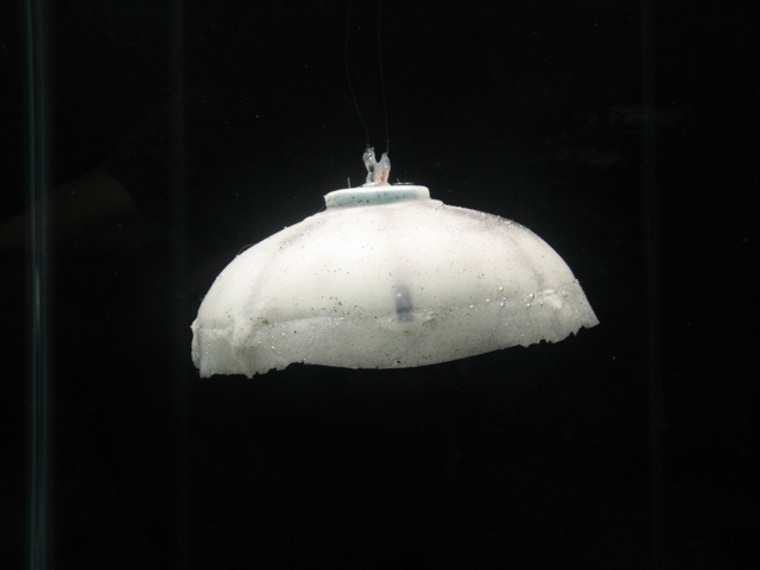
A robot built to look and swim like an inconspicuous jellyfish may keep going and going and going thanks to an infinite source of fuel -- its surroundings.
The power comes from heat-producing chemical reactions between oxygen and hydrogen with platinum coated on the surface of the bio-inspired robot, known as RoboJelly.
The heat is transferred to the artificial muscles in the robot, causing them to contract just as real muscle does in a jellyfish, the Virginia Tech and University of Texas at Dallas team behind RoboJelly explains in a paper published Wednesday in the journal Smart Materials.
The muscles are little wires called shape memory alloy composites that are built on the inside of the jellyfish-like robot frame.
In the robot, as in real jellyfish, the contraction of the muscles cause the bell-shape disc to close in on itself, generating thrust. After contracting, the bell relaxes and regains its original shape.
Last November, we reported the team improved Robojelly's propulsion by adding a flap at the lower, bottom section of the bell to better mimic the real jellyfish.
In earlier versions of the robot, batteries or an external source of electricity powered the muscles. But the artificial muscles are energy hogs, which sent the researchers looking for an alternative. Hydrogen, noted Alex Villanueva, a team member, is a more energy dense fuel than a battery, meaning you can store more energy in your robot.
With the new system, "you don't need any electricity, you just need to have hydrogen and oxygen flow over your actuators," Villanueva told me on Tuesday.
"The other cool thing about it is we're going to be swimming in water. What's water? It's hydrogen and oxygen. So you've got an infinite source of fuel," he added.
The caveat is that the water needs to be converted into hydrogen and oxygen, "and that requires power," Villanueva noted, "So there are definitely things we still need to look into."
One possibility is a solar-powered fueling station resting on top of the water, which uses electrolysis to split water into hydrogen and oxygen. Whenever the Robojelly gets low on fuel, it could swim to station for a refill.
With such a system in place everyone -- from military personnel interested in deploying Robojelly to spy on enemy submarines to environmentalists checking water quality along the coast -- can send their robot to work and know it will keep working and working and working until the job is done.
-- John Roach is a contributing writer for msnbc.com. To learn more about him, check out his website and follow him on Twitter. For more of our Future of Technology series, watch the featured video below.